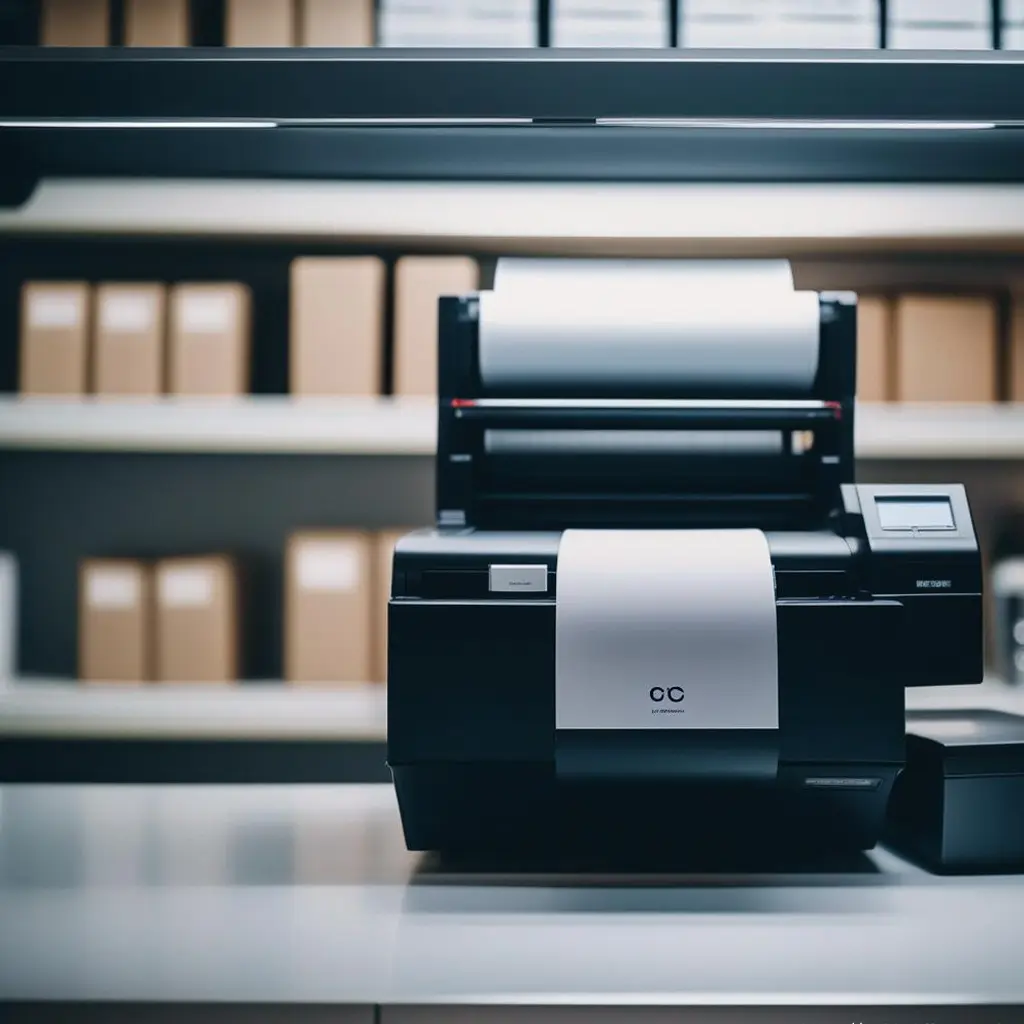
In the world of thermal printing, precision is key to achieving optimal results. If you’re a proud owner of a thermal printer, ensuring the correct paper size is set is paramount. Let’s embark on a journey to demystify this process and enhance your printing experience.
Understanding Thermal Printer Settings
Before we dive into the nitty-gritty, let’s acquaint ourselves with the intricacies of thermal printer settings. Accessing these settings may vary across models, so it’s crucial to consult your printer’s manual for precise instructions.
Steps to Set Thermal Printer Paper Size
Brother Thermal Printers
For users of Brother Thermal Printers, follow these simple steps:
- Navigate to the settings menu on the printer display.
- Look for the “Paper Size” or “Media Size” option.
- Choose your desired paper size or input custom dimensions.
Epson Thermal Printers
If you’re using an Epson Thermal Printer, the process involves:
- Accessing the control panel or printer software on your computer.
- Locating the “Paper Size” or “Page Setup” section.
- Selecting the appropriate paper dimensions.
Troubleshooting Common Issues
Encountering issues with paper size is not uncommon. Here are solutions to some common hiccups:
Issue: Paper Jams Solution: Check for torn edges, ensure correct paper loading, and inspect the paper path for any debris.
Issue: Incomplete Prints Solution: Verify paper roll installation, ensure proper alignment, and check for any interruptions in the printing queue.
Tips for Optimal Paper Size Selection

Selecting the optimal paper size is a crucial step in achieving top-notch printing quality. Let’s delve into insightful tips to empower your decision-making process:
1. Embrace Standard Sizes for General Versatility
Opt for standard paper sizes like A4, letter, or legal for everyday printing needs. These dimensions are universally accepted and ensure compatibility with various printers. They’re ideal for documents, reports, and other general printing purposes.
2. Tailoring Dimensions for Specific Requirements
Customization is key, especially when dealing with specific printing needs such as labels or receipts. Consider adjusting paper dimensions to match the unique requirements of your application. This ensures a tailored approach, enhancing the precision and effectiveness of your prints.
3. Precision in Label Printing
When dealing with labels, precision matters. Opt for paper sizes that align seamlessly with your label design. Ensure the dimensions complement the label layout, preventing any information from getting cut off or appearing disproportionate.
4. Receipts: Finding the Perfect Fit
For receipt printing, precision and clarity are paramount. Choose paper sizes that accommodate the necessary details without unnecessary blank spaces. This not only enhances the professional appearance of your receipts but also optimizes paper usage.
5. Consider User-Friendly Dimensions
Ease of use is often overlooked. Opt for paper sizes that align with user expectations and convenience. Standard sizes are not only widely available but also user-friendly, minimizing any potential confusion during printing.
6. Compatibility Across Devices
If you use multiple printers or devices, ensure the selected paper size is compatible across all platforms. Consistency in paper size simplifies the printing process and reduces the likelihood of errors or misprints.
By adhering to these detailed tips, you’ll become adept at selecting the ideal paper size for any printing scenario. Whether it’s standard documents, labels, or receipts, a thoughtful approach to paper size enhances the overall quality and efficiency of your printing endeavors.
Compatibility Considerations
Ensuring compatibility between your thermal printer and paper is crucial. Refer to the manufacturer’s guidelines to avoid any unforeseen issues.
Printing success hinges on the harmonious compatibility between your thermal printer and paper. Let’s explore the intricacies to ensure a smooth printing journey:

Understanding Manufacturer Guidelines
Delve into the specifics outlined by your thermal printer’s manufacturer. Every printer model may have unique requirements and recommendations regarding compatible paper types, sizes, and specifications. The user manual is a goldmine of information, offering insights into the optimal paper choices for your specific device.
Paper Type Considerations
Different thermal printers may be designed to work optimally with specific paper types. Whether it’s direct thermal or thermal transfer paper, understanding the distinctions and selecting the right type is pivotal. Some printers may perform better with coated papers, while others excel with uncoated options. Dive into the specifications to match your printer’s preferences.
Size Matters: Matching Paper Dimensions
Ensure the selected paper dimensions align seamlessly with your printer’s specifications. An improper fit can lead to jams, misalignments, or printing interruptions. Stick to the recommended sizes, and if customization is necessary, refer to the printer manual for guidelines on adjusting settings for non-standard dimensions.
Thickness and Weight Guidelines
Consider the thickness and weight of the thermal paper. Printers are calibrated to handle specific thickness ranges, and exceeding these limits can result in operational issues. Check the manufacturer’s guidelines for the acceptable paper thickness and weight to maintain the printer’s longevity and performance.
Coating and Sensitivity Settings
Pay attention to the coating on thermal paper. Some printers may have sensitivity settings that can be adjusted based on the paper’s coating. Understanding these nuances and making the necessary adjustments ensures optimal print quality and longevity of the print head.
Anticipating Issues: Troubleshooting Compatibility
Despite precautions, issues may arise. Familiarize yourself with the troubleshooting section in the user manual. This equips you with the knowledge to address compatibility hiccups promptly, ensuring minimal downtime and smooth printing operations.
By immersing yourself in the nuances of compatibility, you pave the way for a seamless thermal printing experience. Referencing manufacturer guidelines becomes your compass, steering you away from potential pitfalls and toward the smooth, efficient, and high-quality prints you desire.
Frequently Asked Questions
Explore these insightful answers to frequently asked questions, ensuring you navigate your thermal printing journey with confidence:
Choosing the Right Paper Size: A Delicate Balance

Q: Can I use any paper size with my thermal printer? A: While some printers offer flexibility, it’s recommended to use sizes specified by the manufacturer.
Choosing the right paper size is akin to finding the perfect dance partner for your thermal printer. While certain printers provide a degree of flexibility, veering too far from the recommended sizes can lead to compatibility issues, paper jams, or compromised print quality. Refer to your printer’s user manual for the specified paper sizes that guarantee optimal performance. Embracing the recommended sizes ensures a harmonious dance between your printer and paper.
Calibration Chronicles: A Maintenance Necessity
Q: How often should I calibrate my printer for paper size? A: Regular calibration is advisable, especially when changing paper rolls or encountering printing issues.
Calibration, the unsung hero of thermal printing maintenance, demands regular attention. Consider it the tuning of your printer’s instrument to ensure a symphony of precise prints. Frequent calibration becomes crucial, particularly when introducing new paper rolls or if you notice deviations in print quality. Think of it as a proactive measure, preventing potential hiccups and maintaining the accuracy that defines thermal printing excellence.
Pro Tips for Effective Calibration:
- Routine Checks: Make calibration a routine task, embedding it in your regular printer maintenance schedule.
- Paper Roll Change: Always recalibrate when changing paper rolls. This ensures the printer adapts to the specific characteristics of the new roll, maintaining consistent output.
Troubleshooting Through Calibration: The Art of Precision
Calibration not only ensures accurate paper size recognition but also acts as a troubleshooter. If you encounter issues like misalignment or incomplete prints, a round of calibration could be the remedy. Leverage your printer’s manual to navigate the calibration process efficiently, transforming it from a maintenance chore to a strategic move for sustained printing excellence.
By mastering the nuances of paper size selection and calibration, you elevate your thermal printing experience from ordinary to extraordinary. These FAQs serve as your compass, guiding you through the intricacies and empowering you to unlock the full potential of your thermal printer.
In conclusion, mastering the art of setting thermal printer paper size elevates your printing game. Navigate your printer settings with confidence, and let each print be a masterpiece. For a wide range of thermal paper options, explore our Thermal Paper Collection today!
